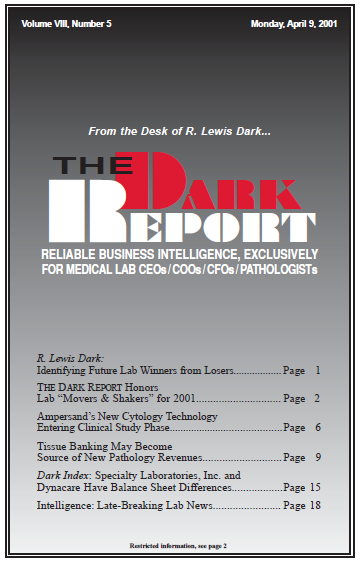CEO SUMMARY: It’s time again to recognize and honor the lab industry’s strong leaders in innovative management. These laboratory executives are implementing business strategies designed to position their lab organizations to serve the changing needs of the healthcare system. Their vision and willingness to “stay the course” are traits they hold in common. IT’S BEEN …
THE DARK REPORT Honors Lab “Movers & Shakers” Read More »
To access this post, you must purchase The Dark Report.


